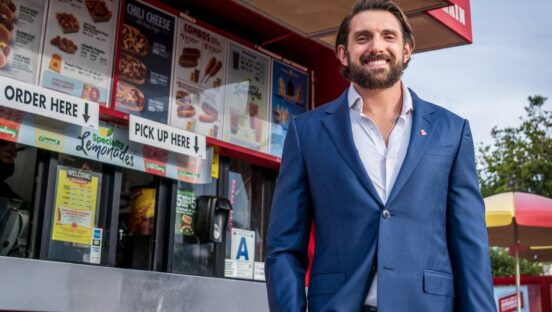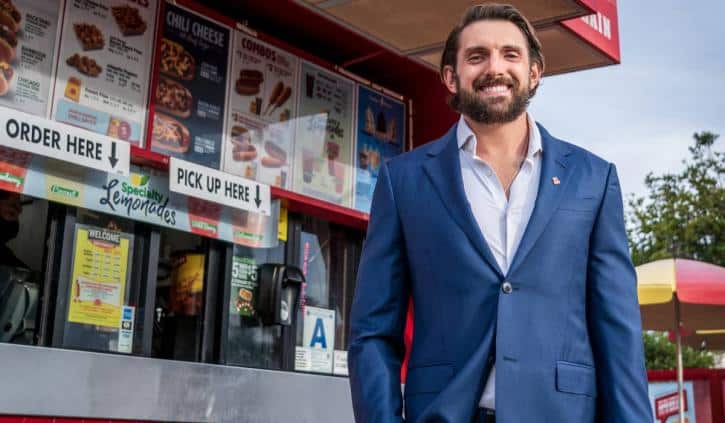
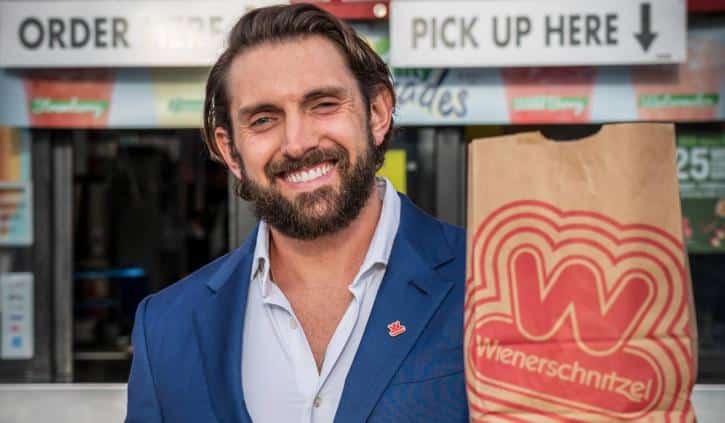





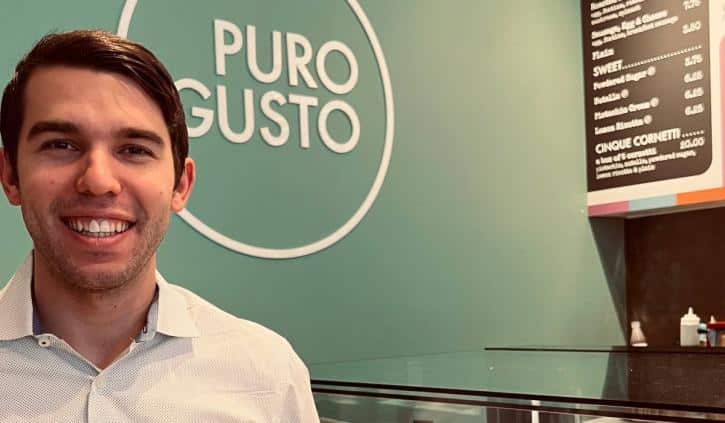



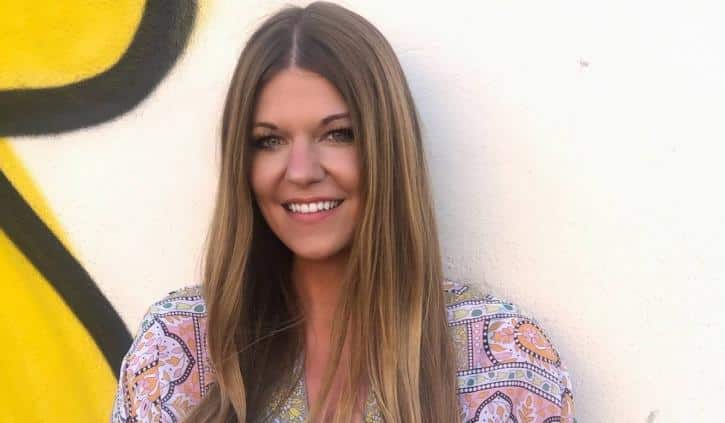



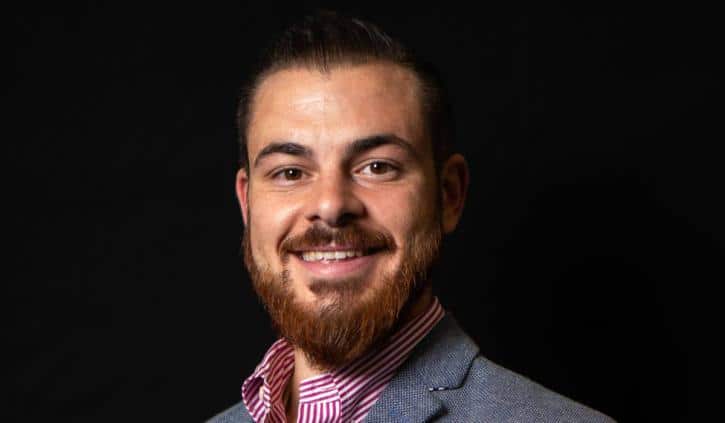


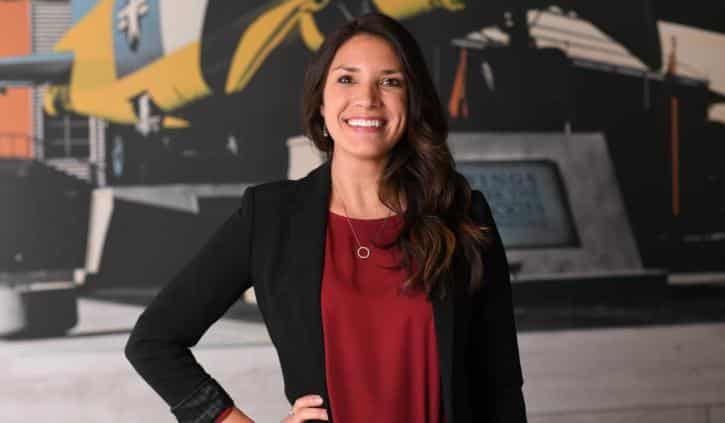

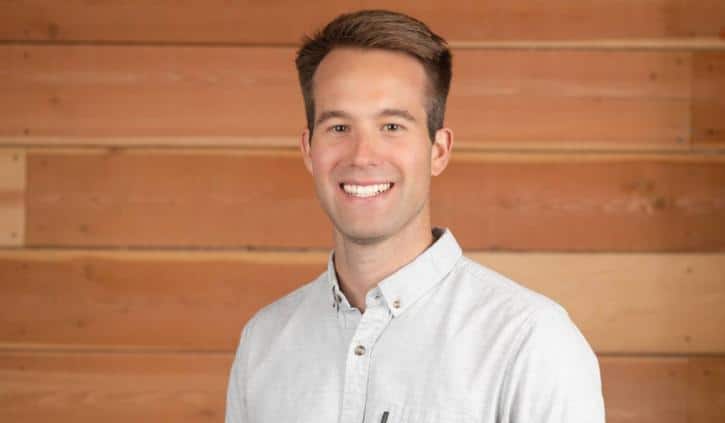

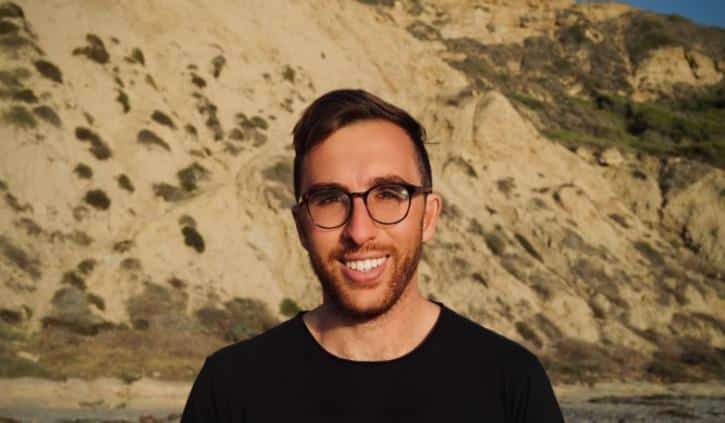
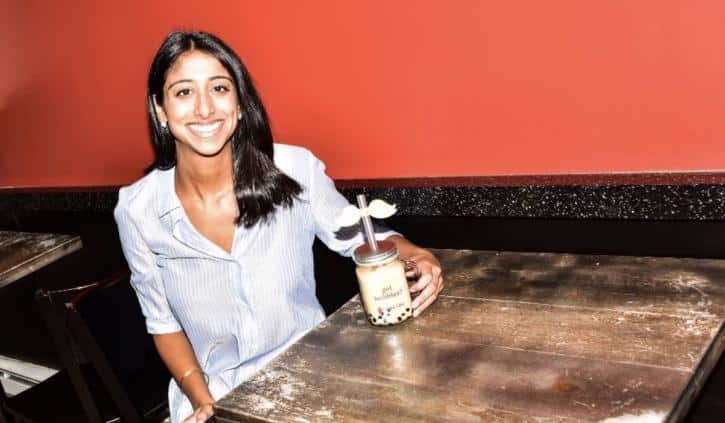

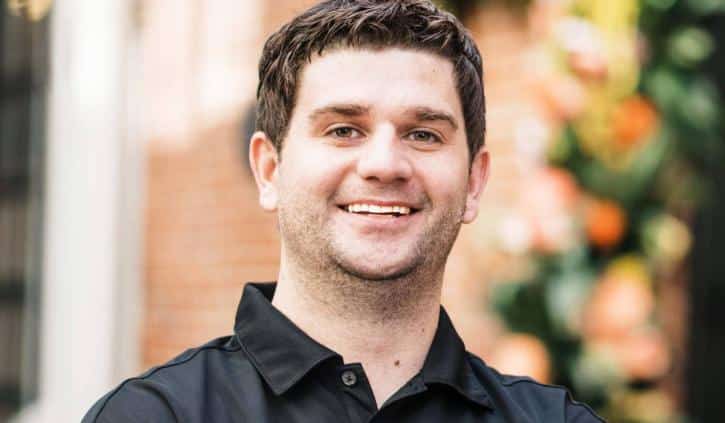
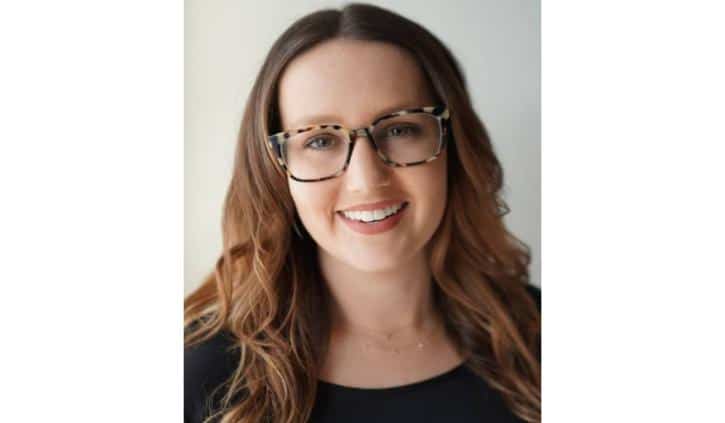

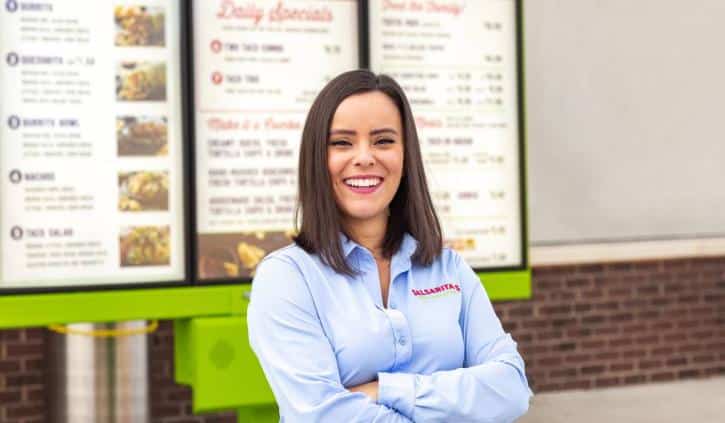
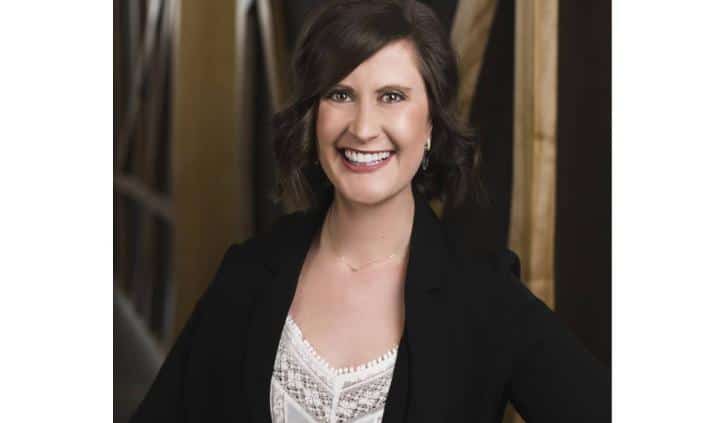
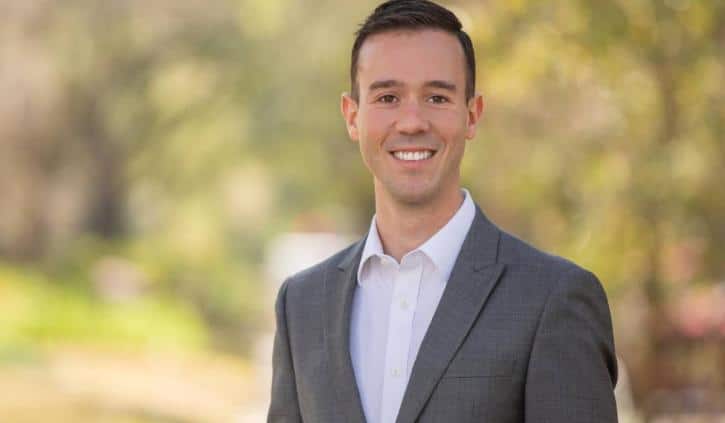
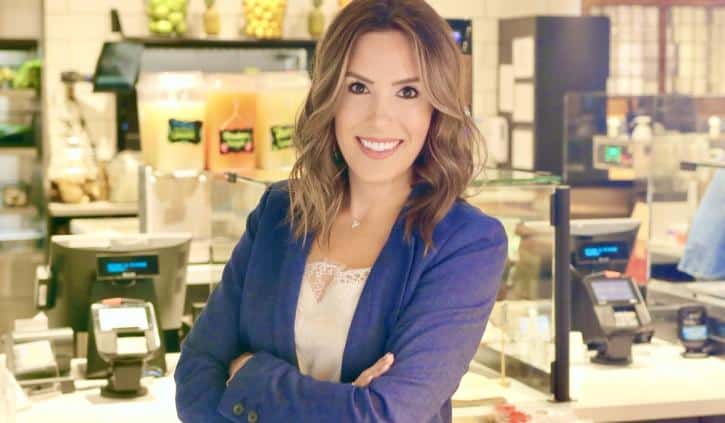
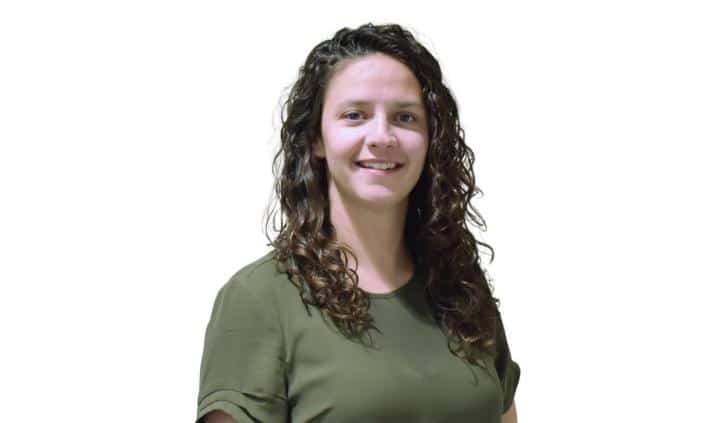


The innovators
When it came to restaurant leadership, the pandemic didn’t leave room for learning curves. Innovation arrived too fast, pivots too frequent, and plainly, the switch to survival mode tossed executives of all ages and resumes into the fray. But the end result was hardly a setback. In fact, the trials of the past two-plus years spurred creativity at levels unseen. And that extends up and down the corporate ladder.
In this year’s collection of the quick-service industry’s most exciting young executives, founders, and franchise leaders, a common theme was resiliency. These 35 visionaries responded to the crisis with ideas and strategies that will last well beyond it.
CHECK OUT PAST YOUNG LEADERS LISTS:
If viewing on desktop, click arrows in picture to see the next slide.
J.R. Galardi
President and CEO, Galardi Group
Age: 33
J.R. Galardi is a realist. He’s the CEO of a 350-unit restaurant chain at 33 years old, and without his last name, he probably wouldn’t have got here, he admits. But while it’s something “always in the back of people’s heads,” Galardi isn’t carrying a chip on his shoulder.
“I want to do my best to make sure I run this business as it should be run,” says Galardi, whose father, John, created the chain in 1961. “Regardless of who my dad is.”
Galardi’s story isn’t your standard birthright. Growing up, he didn’t expect to run the family business and was, in fact, doing the opposite. He had a concert promotion company in Denver after following his father’s advice—to pursue his own interests if it suited him.
Yet things shifted when John was diagnosed with pancreatic cancer. Galardi grasped the gravity of what his father, who passed away in 2013, built, starting as a single hot dog stand six-plus decades ago. Galardi didn’t want Wienerschnitzel to “get broken up,” or for private equity to swoop in. “We’re going to continue the upward trend,” Galardi says, “and really make sure that everything my dad worked for stays in place.”
Galardi has a habit of going all-in when he sets course, he says. It drives his wife crazy. And it’s what happened with Wienerschnitzel.
Galardi was promoted atop the world’s largest hot dog franchise in early February. He added CEO to his president title, which he held since 2017. Galardi also stepped into his mother, Cindy Galardi Culpepper’s, role, who stayed on as executive chairman.
In recent years, Galardi says she stepped back and let him learn from the front. That was nothing new. At 13, Galardi helped out at a Wienerschnitzel in Newport Beach, California. He was a janitor, fry cook, and drive-thru window attendant. He even poured beer out of the store’s tap.
When his father got sick, however, Galardi returned with a specific directive—to learn the business while also earning his stripes. On day one, “nobody knew what to do with me,” Galardi recalls. They had him update pricing stickers on a menuboard that hung in the conference room.
“It’s not only that I wanted the perception to be that I just didn’t take over, but also, I’ve been a big believer that you shouldn’t be able to tell people what to do if you don’t know what to do yourself,” he says. “I wanted to make sure that I had a very solid understanding of the business from the ground up.”
Galardi took jobs across the organization, from operations to development to marketing. He started with the latter, which proved a natural extension from Galardi’s events history. Additionally, this was during the “rise of the millennials,” and the best way to reach them, Galardi says, was to market to himself. He created a “Visionary Department” in 2014 that amplified social media, digital, and outreach. They’d connect with events—concerts, Supercross, music festivals—and meet guests by handing out product and talking about the legacy chain. The goal being to get in front of a younger demographic while remaining loyal to a core guest who has stuck around for generations. “You don’t want to alienate them, but you want to attract new business,” Galardi says.
Through this, the brand brought the average age of its diner down from 49 to 44. While the Visionary Department started out as a separate arm of Wienerschnitzel’s business, it’s now integrated within the company’s broader marketing aim. During COVID-19, it got set aside due to the fact events, generally, stopped happening. It’s building back up now, Galardi says.
His marketing role tailed into another position, which carried over into another. And Galardi kept asking questions and figuring things out. One outlet he wanted to explore was philanthropy. Then the company’s “chief visionary officer,” Galardi ignited a program called, “Hot Dogs for Homeless,” partnering with Skate for Change founder Mike Smith. The Hot Dogs for Homeless Tour, which also included Skate for Change CMO Josh Schmitz, visited 20 cities and raised $200,000. It gave away more than 40,000 hot dogs. Another end result—seven people inked matching tattoos of a skateboarding hot dog. Galardi got his on his left arm.
Interestingly, the notion of a Wienerschnitzel tattoo isn’t all that unique, he says. Galardi has seen them on customers plenty of times before. CMO Doug Koegeboehn once even walked into the office and pulled his pant leg up to reveal Wienerschnitzel’s famed pole. “He’s like, please don’t ever fire me,” Galardi jokes.
This kind of loyalty struck Galardi from the moment he rejoined the company. “People live and die by this food. And I get it. It’s delicious,” he says. “But it threw me for a loop. I never experienced it until working in the brand.”
And now he’s tasked with guarding it. Under Galardi’s time as president, same-store sales jumped 42 percent. Digital sales ballooned 400 percent. This past year marked the brand’s 11th consecutive run of comps growth.
Wienerschnitzel’s unit expansion in recent calendars, however, has been mostly stagnant. Galardi says it’s a product of some external realities—construction costs and the landscape being what it is—and a footprint with perhaps too many variations. He says the chain is working to develop a modular concept to lower costs and improve scalability. Wienerschnitzel has six different main building types and sub-options on each of those. And unlike some other quick-serves, kitchens aren’t standard, either. So the brand doesn’t have the luxury of picking an innovation and rolling. “We have to go to each building type and configure it,” Galardi says. “It’s caused some challenges. I think moving toward a more consolidated and consistent footprint, like a modular unit, will l have a lot of benefits in the future, because we can get footprint consistency. That will help with operational efficiency and equipment rollouts.”
Meanwhile, Wienerschnitzel continues to explore technology and become more efficient. It implemented third-party delivery pre-pandemic and then worked on packaging and streamlining off-premises. It put doorbells on some dining rooms so guests could ring and head in for takeout. The company teamed with Olo to build out its website for mobile ordering. “I think it jumped us probably five years, at least, in the first year,” Galardi says of COVID.
But just as with marketing, Galardi wants to ensure nobody shows up and can’t order because they don’t understand the process. It’s the ever-evolving balance of staying relevant yet not forgetting the consumers who got Wienerschnitzel to the dance in the first place.
Galardi also oversees 13-unit Hamburger Stand and Tastee Freeze, which Galardi Group acquired in 2003. The latter has four units, but is on the menu at nearly all Wienerschnitzels.
Galardi believes both have legs to grow, especially overseas. Hamburger Stand, in particular, appears to be the company’s most viable vehicle, just given the product’s familiarity with international consumers (the hot dog isn’t quite an established daypart outside of America). It incorporates Wienerschnitzel’s menu, which typically mixes about 49 percent of sales.
He can see Tastee Freeze kiosks in malls, movie theaters, and more.
As Wienerschnitzel’s growth unfolds, Galardi will continue to drive his father’s legacy forward. At 33, he’s a young CEO by most measures, in addition to being the founder’s son. “I think definitely in the beginning, when I was in my mid- and early-20s, I would show up to meetings and people would think I was there to set up the projector, bring them coffee,” he says. “Now, I’ve established a good relationship with vendors and franchisees. I’m hoping age is irrelevant and they’ll take me for my merit.”
Jennifer Lewis
Director of Operations, Chronic Tacos
Age: 34
Jennifer Lewis is already a restaurant vet. She graduated from college and dove into her family’s business, overseeing 10 Las Vegas McDonald’s. When Lewis’ parents retired, she began to look for a fresh chapter and found Chronic Tacos. Lewis’ purchased her first store in 2015 in the Palms Hotel and Casino.
Soon, corporate took notice. They asked her to join as franchise support manager and assume direction of a portfolio of units. Lewis developed strategic plans and spearheaded a COVID response that centered on ground-level support and communications, particularly with mandate tracking and federal aid. In 2022, after four years, Lewis was named Chronic Tacos’ director of operations. “I feel the most important part in my role is building strong relationships with our franchisees,” she says. “Gaining their confidence is fundamental. Especially, operating in a time of uncertainty, providing franchisees with strong support helps them maintain high levels of confidence and in turn deliver on our brand promise.”
Being an owner/operator established credibility quickly. “The franchisees I support have an appreciation for the fact that I can see things from their perspective,” Lewis says. “I look at myself as a liaison, providing an open channel of communication, providing reassurance in knowing that their feedback plays a huge part to the success of our brand.”
Brand CEO Michael Mohammed says Lewis worked with individual franchisees to identify grants and calculate through the PPP during the pandemic, as well as applying for the Restaurant Revitalization Fund. Additionally, to set up third-party delivery, curbside, and create a “market menu” where customers could come into select stores and buy essentials. Lewis also led the implementation of a systemwide platform for HR to streamline onboarding of employees and is currently rolling an enterprise platform to assist franchisees with retention.
“During these restrictive times, Jennifer implemented virtual operations audits so we were still able to have visibility in stores and were able to support our franchisees,” he added. “There was initially a lot of confusion with regards to information about relief options, and Jen was able to distill it down so our franchisees could be fully prepared when it came time to apply for those specific loans or grants.”
Amanda Rather
Manager, Pizza Hut Marketing
Age: 31
Amanda Rather began her career with Yum!’s pizza icon as a social media copywriter. Today, she oversees TV advertising, a role that began in early 2021 just as Pizza Hut started to unveil a new creative campaign, “Spirit of the Hut”—a continuation of the chain’s nostalgic, yet modern approach in recent years. Rather produced five TV campaigns to strengthen brand linkage and relevance within her first year. “Learning to navigate the ins-and-outs of TV production during the pandemic has been challenging,” she says. “But it’s been a rewarding, unique experience to be part of a brand that has undergone its own transformation at a time when the whole world is changing. We’re finding new ways to resonate with our customers and have honed in on a campaign strategy that consistently delivers.”
Going back further, Rather’s ascension took her from copywriter to social strategy, where she led the aforementioned process of reshaping Pizza Hut’s image. Rather implemented robust KPI reporting to improve content on multiple platforms and channels, and continued to listen to feedback, which earned her a reputation as a leader with a customer-first mindset. Through her social efforts and Pizza Hut’s broader creative, the company has seen significant improvement in various health metrics. Perception of taste, high quality, relevance, and value have all climbed 3 percentage points among existing customers and those now aware of the classic chain compared to 2018.
Toward the start of COVID, Rather also developed a social outline to address the landscape—one that enabled the brand to celebrate its pizzas, capitalize on trends, and yet still share information concerning new programs vital to the times, like contactless curbside carryout and delivery initiatives.
Kaitlin Stoehr
Director of Marketing, Krystal
Age: 28
Kaitlin Stoehr found the marketing bug as an 11-year-old watching Season 1 of “The Apprentice.” And she discovered a perfect outlet in restaurants. In high school and college, Stoehr immersed herself on the front-lines, including a stint covering the overnight shift at Steak ‘n Shake at a corporate training location.
She received a scholarship to attend Robinson College of Business at Georgia State University, where Stoehr graduated Summa Cum Laude with a degree in marketing, becoming the first person in her family to do so. Stoehr’s corporate path began at FOCUS Brands, rising from intern to marketing coordinator to marketing specialist, and, lastly, brand manager. After four years, she took on a post as manager of national calendar and activation for Tropical Smoothie Café. Her first day? The start of COVID lockdowns. During the crisis, Stoehr helped grow sales and roll high-performing LTOs. She then joined Krystal Restaurants in her current role, which is the second ranked member of the marketing team. “Though Krystal is celebrating its 90th year, it embraces young leaders and new ideas,” Stoehr says. “We operate closer to the mindset of a startup than a traditional brand, which enables us to experiment and implement programs at a rapid speed.”
In less than a year with Krystal, Stoehr helped the iconic burger chain introduce a new website and app with branded delivery functionality, implement digital menuboard testing with AI tech in select drive-thrus, partner with Butter.ATL, 2Chainz, and Victor Cruz as part of a rebranding, team with Southeastern Conference athlete influencers on sponsorships, select a new agency of record, and debut LTOs, including Country Fried Krystal and Shrimp Po’ Boys. She is also leading initiatives to launch an optimized menu with new architecture and designs, as well as four ghost brands with one in pilot testing.
“We have an incredible opportunity to reinvigorate the Krystal brand and are tackling the challenge from all angles—store development, loyalty, products, programs and partnerships,” Stoehr adds. “I can’t think of a greater place to develop my skills in the restaurant industry than right here at Krystal surrounded by our incredible team and partners.”
Leah Arp
Senior Off-Premises Manager, Your Pie
Age: 26
Leah Arp has been with Your Pie since she was 18. She’s held roles from training manager (helping open 63 locations across 17 states) to franchise support manager—a job that gave her oversight of 22 restaurants while also being asked to coordinate training and marketing for all new store openings.
Before assuming her present title, Arp served as off-premises marketing manager for two years. That stretch coincided with the pandemic, which put Arp in the heart of the industry’s most visible transformation: she was charged with advancing strategic growth outside Your Pie’s four walls. That included managing and coordinating with strategic partners, both digital ordering platforms and third-party delivery services. She analyzed data flowing through digital and reported back to operators. Pre-COVID, 15 percent of the company’s business came off-premises. It ballooned to more than 80 percent at peak.
In Arp’s tenure with Your Pie, the chain scaled from fewer than 15 stores to more than 70. “Growing with the Your Pie Brand and our franchise owners has been unbelievably gratifying from a professional and personal standpoint,” she says. “I have always strived to do the best I can to support our owners and the communities we serve. With the acceleration of growth in the off-premises space over the past two years, the mindfulness to the owners and our guests has been more important than ever. I look forward to keeping that mindset throughout the rest of my career.”
Harold Isaac Walters
CEO, Shootz Hawaiian
Age: 33
Shootz Hawaiian sprung up in Southern California’s Rodeo 39 Public Market in September 2020, right in the thick of COVID. But Harold Isaac Walters was used to betting on himself. He dropped out of high school in 2006 and grabbed odd-jobs where he could. A little over a decade later, he started a digital agency and ecommerce brand. Although it succeeded, Isaac Walters wanted to expand and was presented with an opportunity to launch a restaurant with childhood friends Nolan Perez, Christian Solomona, and Michael Dancel. “I took the leap, and eventually my knowledge of tech and internet marketing become increasingly valuable as we went through the pandemic, and the digital needs for the restaurant quickly became a necessity,” he says.
Shootz Hawaiian “absolutely killed it,” Isaac Walters adds. They’re now opening a second location in Ontario Ranch, California. Along with his partners, Isaac Walters also opened a Latin-Asian fusion quick-serve called Buenos Migos and is looking at bringing a cookie shop, Sweet G’s, to market this year.
During the pandemic, Isaac Walters says Shootz Hawaiian had “to make a stand digitally.” The brand added new point-of-sale technology, reputation management, and layered paid/organic marketing platforms in its tech/marketing stack. It created a loyalty program—Shootz Collective—and ignited paid advertising on Facebook and Instagram, building a database of more than 39,000 customers across SMS, Facebook Messenger, and email. Shootz Hawaiian also tapped mobile ordering and tableside contactless dining, and is working toward kiosks.
“Lastly, I started a charitable event called ‘Shootzgiving.’ We host Shootzgiving each month where we give away our signature Kimchi Butter Katsu Chicken Sandwich for absolutely free with no purchase necessary,” Isaac Walters says. “We also give a percentage of proceeds for any additional sales and 100 percent of our children’s book sales to a local charity. We close four hours early to reset our store and have a celebration with our team after.”
Between the first two events, the brand gave away more than 1,200 chicken sandwiches and $2,000 in contributions.
Bryce Iapicca
Director of Operations, Puro Gusto
Age: 24
Puro Gusto is a relatively new entry to the restaurant landscape, having opened December 15, 2021, in Washington, D.C. A week later, daily sales were nearly half of where they were needed to be to meet goals. And then, Omicron took hold. Figures plummeted virtually overnight and downtown D.C. business crawled.
That’s when Bryce Iapicca got to work. He adjusted hours, shifted channels, reduced staff, and grappled with a 10 percent decline in sales (versus anticipated figures). Further, he was now directing a team that hadn’t had enough time to embed itself in company culture. Despite all of it, three months later, sales were back on the mend. Plus, Puro Gusto maintained the original team it opened with.
Today, goals have begun to shift back to Puro Gusto’s original aim. “There are many different F&B concepts in the U.S.—coffee shops, bars, quick service, fast food, fine dining, and so on,” he says. “To me, the most exciting part of Puro Gusto is bringing a new type of concept to Washington, D.C. that will eventually be franchised throughout the U.S. Our version of the all-day Italian café marries quality food, value priced, excellent service, and retail grocery [food and alcohol] brings together the best of Europe for an American audience.”
Iapicca has worked in quick service since he was 17, starting as a high school junior helming the register of a pizza chain. Within a year and half (now a senior) he was named manager and given a staff and $1.5 million in revenue to oversee. In his third—and last—year at the University of Maryland, Iapicca returned to restaurants as a shift manager for HMS Host, working the Starbucks at Reagan National Airport. Iapicca was then promoted to director of Starbucks Brands for the company upon graduation and was travelling across the country to ensure compliance.
“I have been in the hospitality industry for most of my career and the aspect of the work that continually draws me back is the people,” Iapicca says. “I love the interactions with customers, partners, vendors, and the community. Each day I have the opportunity to meet new people, tackle a new challenge, and influence the future of the food and beverage landscape for not only Puro Gusto, but the markets we serve. That is the best aspect to my job and I love every minute of it.”
After dabbling in cybersecurity sales and managing a Starbucks unit in Baltimore, Frank Sickelsmith, then-global VP at parent company Autogrill, recruited Iapicca in June 2021. Sickelsmith was leading the company’s directive to develop a new brand in the U.S. based on Italian café culture—Puro Gusto.
“As director of operations of the first Puro Gusto in the U.S., I like to say I have one job, but two very different roles,” Iapicca says. “As is traditional for a DO, I oversee the P&L, staffing and scheduling, inventory, etc. But in the other part of my role, I work with our partners in Italy to craft the vision of Puro Gusto for the U.S. market, develop brand strategies and materials, consult and source new vendors, and drive other strategic initiatives. It is a mix of work that I embrace and relish wearing multiple hats each time I step through the doors.
Kayleen Alexson
Director of Brand Experience, Caribou Coffee
Age: 33
Since joining the coffee chain in 2018, Kayleen Alexson’s purpose-led strategy and creative mentality have been central to Caribou’s outreach, especially as it begins to expand from a regional to national concept. Functional areas of her team include internal and external communications, social media and content strategy, and community giveback. Her team re-focused the company’s social and PR strategy and rebuilt its “hometown partnership” strategy as it turned focus to local impact. Additionally, the brand published its first environment, social, and governance report in 2021, and will now do so annually.
“I believe small moments that ‘fill your cup’ throughout the day, matter,” Alexson says. “One of these moments for me always includes—quite literally—a great cup of coffee in the morning, while other moments are shaped day-to-day by authentic connection and experience with others. I feel lucky to have spent the past four years at Caribou Coffee, a brand whose purpose is to create day-making experiences that spark a chain reaction of good. I work for and with some of the best humans who are guided by this purpose and our core values daily. I lead an amazing team, focused on driving brand love and brand impact.”
Nearly every function under Alexson was reimagined during COVID as well. Directives amplified around teams, guests, and store-level needs. They prioritized giving back and, in Minneapolis during the George Floyd murder, where Caribou is based, she played a lead role in rallying conversations, donations, and enabling teams and field leadership to gain support and confidence to jump in and strengthen their communities.
“We say often that something as small as a great cup of coffee in the morning or a kind interaction with our team can change the trajectory of a guest’s day,” she says. “And the way we operate our business can and should positively impact our global communities. Are we saying that coffee can change the world? No, we’re not. But the people connecting around that coffee just might.”
Andrew Verhagen
Senior Franchise Manager, Blaze Pizza
Age: 32
Andrew Verhagen arrived at Blaze in 2021 as franchise manager. He grew up in the industry around his family’s pizza concept and honed his franchising knowledge with Bojangles. Over the past year, Verhagen led a variety of strategic initiatives to support Blaze’s franchise efforts, which resulted in more than a dozen commitments for new store developments. Additionally, he assumed a lead role in the sourcing, analysis, and launch of Blaze’s new website and digital strategy.
“Having experienced the franchise world from both the franchisee perspective and now the franchisor, I’m encouraged by and delighted to be among the new generation of executives leading these great brands,” Verhagen says. “While the pandemic certainly had its challenges, it’s clear that consumers are now more than ever demanding both exceptional products and service from brands they know and love.”
“Specifically, for development, this is an exciting time to be partnering with existing franchisees to grow their business as well as cultivating new franchisees with fresh perspectives in new markets,” he adds. “There also happens to be a paradigm shift in the day-to-day of franchising utilizing a more data heavy and analytical approach to achieve goals. The era of a handshake over a highball is transforming into software with seltzers, something our younger generation has naturally been able to employ to enhance the strategic efforts of leadership. I am grateful to be a part of this great industry.”
Kyra Butler
Trainer, JPC Pizza (Domino’s Franchisee)
Age: 33
Kyra Butler’s rapidly ascending Domino’s career began as a delivery driver at 18. After a five-year hiatus, she returned as GM, opened new locations, and was soon promoted to supervisor, where she grew her store count to 12 locations. Butler also served as the company’s trainer for the past two years and her oversight includes 45 restaurants today.
And it all started with a game-changing innovation. Along with Ryan Raymond (one of the GMs Butler supervises), Jayden Casev, and Syndney Boone, and the help of the franchise organization, she helped pioneer an entirely new system in 2021 for Domino’s that’s been adopted as operating procedure. Called “Load and Go,” it focuses on quality and speed of service out of the oven. The concept is going global. Essentially, just as much emphasis now centers on loading pizza as when it comes out, gets boxed, and prepared to leave the store. It involves new positions and streamlined operations for drivers and Domino’s post-bake team. Deliveries are getting to customers 5–10 minutes faster. Drivers are making more money. Teams are able to produce more with fewer workers. And jobs have become easier during peaks.
Domino’s franchisee Pat Farmer believes the entire system “will be forever” changed in response, and the speed the company moved to launch brand-wide was “astonishing.” It came to light in April 2021 and, by May, Butler’s team pitching Domino’s leadership. From May to August, the brand worked out kinks to create a replicable program that launched to every franchisee by October. The four have now trained “hundreds of franchisees who represent thousands of restaurants.”
Kristin Tormey
Social Media and Gaming Manager, Wendy’s
Age: 31
Of all the major brands, Wendy’s has arguably created the most distinctive voice across its social media and other digital interactive channels. Known for a razor-sharp wit tinged with a bit of snark, “Wendy” has become a character in her own right.
“Referring to Wendy as ‘her’—that’s our goal. We know we’re a brand, but at the same time, we really more so look at Wendy as like this cultural influencer,” says Kristin Tormey. As social media and gaming manager for Wendy’s, Tormey is largely responsible for shaping that voice and persona across platforms, from Twitter and Facebook to TikTok and Twitch. She also manages multiple agency partnerships with the brand to ensure brand consistency throughout various campaigns.
“When it comes to matching the tone, that’s a lot of work,” she says. “You just have to be aware of what’s going on out there, whether it’s what’s in the news, what’s in the industry, what’s going on on each platform, and how that tone is.”
Case in point: Every January, Wendy’s hosts a Roast Day, where Wendy takes to Twitter to grill people. It’s become a fun tradition that engages fans, but at the height of the pandemic, the idea didn’t feel right.
“The world was going through a lot, and it was like, ‘How do we match the tone or kind of like a surprise and delight our consumers in a really fun, entertaining way?’ So instead of roasting, we did a little bit of toasting with a campaign called GroupNug,” Tormey says.
GroupNug encouraged Twitter users to tag someone who could use a boost, and then Wendy’s would spotlight on them via the social media platform. Tormey says the swell of responses led to shout-outs to first responders, nurses, firefighters, family members, friends, and more. Fans could also use a code to get a free four-piece chicken nugget order.
Tormey started at Wendy’s five years ago, when Wendy’s social presence was focused almost exclusively on Twitter. Since then, she’s been a driving force behind taking the brand into not only new socialscapes like TikTok, but also the gaming world.
In summer 2019, “Wendy” began playing Fortnite on the game-streaming platform Twitch. Most recently, the chain entered the Metaverse in early April. Through virtual reality, fans could explore a branded park that included a Fanta soda fountain and a basketball court called the Buck BiscuitDome (the latter was especially timely given it coincided with the final games in the NCAA’s March Madness tournament).
It’s difficult for Tormey to name a single achievement she’s most proud of during her tenure at Wendy’s. However, one that still stands out. In 2019, Chance the Rapper tweeted a daily affirmation that implored the brand to bring back its Spicy Chicken Nuggets, which had been absent from the menu for two-plus years. The timing was ideal; Wendy’s had been having discussions about bringing the item back.
“As a marketer, you’re like, ‘Man, that’s a conversation that we’ve now been invited to on something we’ve been thinking about; we should probably jump in and see that the community really wants this,” Tormey says.
After talking to the higher-ups, Wendy’s issued a challenge: Get Chance’s tweet up to 2 million likes, and the Spicy Chicken Nuggets will return. It only took about 36 hours to reach that goal.
“It was like watching a slot machine; it just kept going up and up in real time,” Tormey says. “The reason I love that one so much is because it married so many different parts of our strategy as social for Wendy’s into one that just came through flawlessly.”
It’s interesting that in the age of influencers and social media savants, Tormey remains very much behind the scenes. She’s not looking to build a personal brand or rack up followers of her own. Instead, her efforts are squarely concentrated around the one and only Wendy.
“In terms of how I lead my team, it’s more by example versus having one person kind of stick out as the one person who leads all of Wendy’s,” she says. “We have so many different experts and so many different spaces on our team that it’s more so, how can I make sure that we have the place that we need to play, the opportunities in which we can grow and have this discovery phase to go do the big things.
Courtney Maxedon
Vice President of Interactive Marketing, Kahala Brands
Age: 33
Prior to joining Kahala Brands, Courtney Maxedon was well-entrenched in the toy and comic book world. But for as different as the sector might appear, the lessons from that time have provided invaluable in her role of vice president of Interactive Marketing.
“During my time at McFarlane Toys, I was ‘on the ground’ so to speak, activating marketing strategies to cultivate that customer and brand connection/loyalty,” she says. “Tactics like influencer outreach, licensor promotions, real-time social engagement, and our own version of a loyalty program really gave me hands-on experience in all digital aspects.”
After a brief pause on marketing at the start of the pandemic, Kahala Brands, under Maxedon’s direction, pivoted to digital media, with that budgeting increasing 230 percent in 2021 compared to the previous year. The increased investment allowed its brands to not only strengthen customer ties but also glean data insights; both continue to pay dividends.
“The silver lining is that the pandemic really shifted our overall marketing outlook at Kahala; our digital channels became a priority, and growing our customer database and intelligence became much more important,” Maxedon says. “We persevered and ultimately forced a lot of innovation that has continued to increase our competitiveness in the industry.”
Liz Slobodian
Vice President of Public Affairs, Firehouse Subs
Age: 35
As the first dedicated public relations manager at Firehouse Subs, Liz Slobodian was essentially tasked with shaping her own role and responsibilities when she first joined the company. Nearly a decade later, this proactive approach continues to expand the scope and ability of Firehouse’s communications.
Now the vice president of public affairs, Slobodian has built an internal team of 10, guided the brand’s media coverage, liaised with government affairs, and served as the point person on the crisis management team—a responsibility that has demanded much of her time over the past two years.
“I’m proud to have built a completely internal PR team that never rests on our laurels as we service a franchise community of more than 400 small business owners every day,” she says. “As a storyteller and communications leader, I have the best job in the world: telling the Firehouse Subs story while being an advocate for our brand and each of my team members.”
Most recently, Slobodian managed all internal and external communications as Restaurant Brands International completed its acquisition of the sub chain.
“I’ve loved this brand since age 7 when it first started in my hometown of Jacksonville, Florida,” she says. “As we begin a new chapter with a growing team and in partnership with Restaurant Brands International, I’m excited to continue our storytelling mission.”
Ross Groeneweg
Chief People & Strategy Officer, Pizza Ranch
Age: 28
Ross Groeneweg will always remember March 16, 2020, as the last day Pizza Ranch served its buffet before COVID-19 shutdowns began. It was also his 26th birthday.
Groeneweg quickly met with employees one-on-one to update them and also ask how many hours they would need to get by amid the shutdowns. A general manager at the time, his people-first approach to the crisis proved a winning strategy. In 2020, his restaurant posted the top sales increase, and he was awarded manager of the year.
This past January, Groeneweg was promoted to chief people and strategy officer after starting at the brand as a dishwasher and dough roller nearly a decade earlier. It was also a meaningful accomplishment, given that his father, Adrie Groeneweg, is the company founder and president.
“I appreciate that my father never pushed me to choose Pizza Ranch for a career. He allowed me to choose, even directly challenging me when I said I wanted to work in Pizza Ranch,” he says. “From a young age … I learned to take on people’s expectations, whether high or low, as a challenge. I enjoy when others in Pizza Ranch have high expectations for me because then I know that they, too, have high standards for themselves and the brand.”
Salem Najjar
CEO, SERVE Hospitality Group
Age: 32
Salem Najjar came to the restaurant world with more financial savvy than most. He spent the early years of his career as a business tax consultant at the consultancy Deloitte, and that knowledge proved a major boon when he became a Tropical Smoothie franchisee in 2015. His company, SERVE Hospitality Group, has since grown to 14 units (six of which opened within the last two years), and an additional 19 stores are already in the pipeline. On average, his cafes turn out EBITDA margins of 26.4 percent.
But while SERVE Hospitality benefits from Najjar’s analytical mindset, the restaurant industry has changed the way he approaches business.
“Since getting into franchising, I’ve learned that trusting your gut is an important part of leadership,” he says. “When making decisions both big and small, it’s good to have all the data, but how you feel about a particular outcome should factor into your decision as well.”
This philosophy is best exemplified through his actions during the pandemic. When one of his managers unexpectedly passed away, Najjar helped set up and contributed to a GoFundMe. He also advanced pay and extended time-off for a staff member who needed to visit an ill parent. Actions like these earned him Tropical Smoothie’s Inspire Better Award in 2020.
Sara Bloom
Real Estate Manager, Capriotti’s and Wing Zone
Age: 32
Even before the pandemic, the real estate market had become more cutthroat, and it’s only intensified since then. That’s what makes Sara Bloom’s role so invaluable to sister brands Capriotti’s and Wing Zone. As real estate manager for the West Coast, Bloom works with franchisees in some of the country’s toughest markets, including Los Angeles and Orange County. Through a combination of tenacity and graciousness, she has helped operators land the perfect spots for their businesses.
“It was [and still] is incredibly difficult to open new restaurants during the pandemic,” says Dennis Watts, vice president of real estate for Capriotti’s and Wing Zone. “Sara’s calm and persistent approach was successful in breaking down roadblocks and helping us succeed.”
He adds that under Bloom’s leadership, sales at new stores have outpaced legacy units by 25 percent.
These successes are especially fulfilling for Bloom because they didn’t happen overnight.
“I struggled throughout most of my life to find a field to specialize in, but I have always been interested in placemaking, city planning, and land and space development, so the real estate role has felt like a natural fit,” she says. “I am proud to have achieved this growth while also becoming a mother to my son who was born in July 2020.”
Brett Nestadt and Seth Cohen
Cofounders of Sweetfin
Ages: 33 and 34
The film industry and mortgage loan sector hardly seem like ideal breeding ground for fast-casual success, but that’s exactly how poke concept Sweetfin got its start. Back in 2015, cofounders Brett Nestadt and Seth Cohen (now CEO and president, respectively) saw an untapped market for premium raw fish in a more relaxed setting. As Cohen points out, full-service sushi restaurants could be found on just about every block in Los Angeles, so the duo knew the market likely had an appetite for poke bowls, too.
“We felt that poke was the next-generation of sushi, or sushi 2.0, because it combined all of the familiar flavors of sushi but the dish could be customizable, portable, and more accessible due to the lower price point,” Cohen says. “Essentially, we were taking the best parts of sushi and Over the past seven years, the brand has expanded to 14 locations across L.A., Orange County, and San Diego. Corporate-owned locations are also on tap in Arizona, Texas, and other states over the next three years.
Not long after the first Sweetfin spot debuted, a spate of other poke restaurants began cropping up as the category became white-hot. Nestadt says it was disheartening to see the concept’s points of differentiation echoed throughout so many other brands. The coronavirus, while a challenging period for Sweetfin, also acted as a stress test for poke restaurants, with not all of them making it through to the other side.
“I would have to say my proudest achievement has been witnessing the resilience of our brand and business since we started, but also especially during the pandemic,” Nestadt says “We’ve shown that we really put our heart and soul into Sweetfin and we’ve outlasted so many of these brands by staying true to our concept.”
Emily Romme
Senior Brand Manager, Smashburger
Age: 30
When Emily Romme joined Smashburger in February 2020, she hit the ground running. After nearly three years running marketing and branding at Denver restaurant group, Lotus Concepts Management, Romme had already embedded herself in foodservice and used that knowledge to take the fast casual’s marketing to new heights.
Early in the pandemic, she worked with internal and agency teams to launch the fundraising campaign, FeedtheFrontliners, which culminated in 30,000 hot meals for healthcare workers and first responders across 25 states.
On the menu side, Romme managed the launch of the Smoked Bacon Brisket Burger, which was the chain’s first new item in two years. It also coincided with the video Smashed It! ad campaign wherein burger fans who “smashed” some goal, rewarded themselves with a burger. Eventually Rick Bayless joined the Smashed It series; he collaborated with Smashburger to develop a signature Chorizo Cheeseburger—while also impressively doing a split in the ad video.
Scott Johnson, former vice president of marketing for Smashburger, credit Romme as an integral part of Smashburger’s recent double-digit sales growth after five years of declines.
“Emily’s hard work ethic and strategic thinking skills shone during the pandemic as she consistently steered Smashburger into positive directions for sales growth and overall brand awareness,” Johnson says.
Candice Beck
Director of Social and Influencer, Chipotle
Age: 32
Candice Beck, Chipotle’s director of social and influencer, describes her group as a team of “culture hunters.”
In August 2020, the company became the first restaurant to surpass a million followers on TikTok. Chipotle says it was also the first fast casual to partner with the social media platform for the lid flip hashtag challenge, resulting in more than 100 million video starts.
“We aim to meet our fans where they are and deliver authentic content endemic to each platform that supercharges our super fans,” Beck says. “We saw incredible potential with being an early mover on TikTok and tapping into the Gen Z audience. We were patient as we waited to strike when we had a unique insight and the right opportunity to show up on the platform in an engaging way.”
As one of the first restaurants on the platform, Beck helped Chipotle listen, experiment, learn, and build relationships with creators and discover influential fans.
This momentum led to the Chipotle Creator Class, a group comprising mostly Gen Z influencers that create Chipotle content and meet up to three times per year for virtual brainstorming sessions.
“We work exclusively with authentic Chipotle fans, and we recognized there was an opportunity to partner with creators in a bigger, more impactful way,” Beck says. “We designed Creator Class to build long-term relationships with creators who were already talking about Chipotle, recognize their genuine fandom, support their unique and individual goals, and give them first opportunities for campaigns.”
For Beck, the key to building engagement is finding a uniquely Chipotle angle that resonates with fans and builds community. In 2021, she oversaw Chipotle’s “Burritos Or Bitcoin” campaign, which involved contestants having 10 tries to guess a six-digit code to win a free burrito or up to $25,000 in Bitcoin. Four million unique users joined the contest, with an average duration of 815 gameplays per second.
Then as part of its 21st annual Boorito Halloween event, Chipotle officially entered the metaverse with a virtual restaurant on Roblox, an online gaming platform. The activation shattered records, with more than 1,600 mentions and 4.5 billion earned impressions, resulting in the highest digital sales day in history on Halloween.
“We are always looking for opportunities to bring value to new communities and tap culture,” Beck says.
Casey Hilder
Director of Marketing, Starbird
Age: 28
Casey Hilder has played an integral role in the marketing strategy behind Starbird, a young quick-service concept that’s seeing same-store sales trending above 20 percent through 2022. This includes the launch of the chain’s TikTok account, which grew to 25,000 followers in only six months. Recognizing the importance of measuring digital marketing performance, Hilder was also instrumental in building a custom advertising dashboard that allowed his team to analyzes results across Google, Facebook, Instagram, and TikTok.
Hilder believes digital represents the future of restaurant marketing. Using that mindset, he implemented a loyalty program at the start of 2020 and grew Starbird’s web and mobile app usage to more than 90,000 users, which accounted for 25 percent of streetside restaurant sales.
“There’s a certain synergy between marketing and technology that’s more crucial now than ever before, especially as every customer acquisition strategy is now automated and executed through our tech stack,” Hilder says.
Sergio Perez
Senior Director of Omnichannel, Bojangles
Age: 29
As Bojangles’ senior director of omnichannel, Sergio Perez has constructed a digital experience that gives customers multiple ways to engage and order through a device. In 2021, he and his team rolled out a new mobile app and website to support order ahead and curbside pickup functions. The platform facilitates coupon redemptions, favorite orders, mobile pay, and location information. The customer experience was amplified even further with real-time order status, personalized menu views, one-click ordering, and an upsell engine to fuel average check.
Perez says the restaurant experience now transcends the four walls and no longer begins and ends when a consumer visits a restaurant and eats the food. That’s why he helped Bojangles launch the NFT Supremes campaign, with a microsite called, “Chickenverse.” The site features work produced by local artists, which has led to increases in Bojangles’ web traffic.
“The restaurant experience is now an omnichannel experience where the real world meets the digital world, where brands can generate demand and relevance by creating new ways for consumers to engage, experience, and transact, and where food does more than make people full,” Perez says.
Oliver Barwin
CEO, Bushfire Kitchen
Age: 28
After a five-year career on Wall Street, Oliver Barwin left New York and made his way to Southern California to lead his family’s concept, Bushfire Kitchen. He did so in March 2020, when the restaurant was flipped upside down by the COVID pandemic.
Under Barwin’s leadership, the fast casual transitioned to Toast’s POS system and began offering curbside pickup, direct delivery, and an enhanced online ordering platform to drive off-premises sales. The chain also implemented a number of software and technology products designed to improve operational efficiency and the customer experience, like a new website, third-party POS integration, accounting software POS integration, kitchen display screens, customer order status automated texting, automated email marketing, and digital gift cards.
“The restaurant industry has changed more in the past two years than it did in the past 20,” Barwin says. “To be a successful leader in the ‘new age of restaurants’ means to always embrace change, proactively invest in technology and people, and uncompromisingly provide high-quality products with top notch hospitality and service.”
Anchal Lamba
President of Gong cha Tea, LLC (Largest U.S. Master Franchisee), Gong cha
Age: 31
Anchal Lamba, a first generation Indian American, was obsessed with bubble tea growing up and the idea of owning a business. So once she graduated from Fordham University, she negotiated the U.S. franchising rights for Gong cha, a global bubble tea concept. She was 24 years old when she opened her first store in Flushing, a neighborhood in Queens, New York. Since then, Lamba has opened 80 locations across the Northeast and Texas and has plans for 30 more by the end of 2022.
In light of COVID restrictions, she launched an e-training system to enable virtual learnings and rolled out third-party delivery and pickup to meet customer demand. Lamba also ensured franchise development remained on target by helping subfranchisees with site selection through long-standing real estate partnerships and market planning with a new AI platform.
“In the past two years, the industry has been challenged in ways we could’ve never imagined,” Lamba says. “Looking toward the future, as a leader in my organization and the industry, I know how critical it is to stay nimble, flexible, and ready to meet our customers wherever they are. At the same time, never losing our focus on our key strategic goals; fueling our growth and supporting it with product innovation and cutting-edge marketing and loyalty initiatives.”
Mark Pilkington
Brand Marketing Manager, Rōti
Age: 33
Mark Pilkington has been known to use his marketing talent to give back to the community. In December 2021, he led an initiative to partner with St. Jude Children’s Research Hospital for the brand’s 12 days of Rōti campaign. In that time, the fast casual and its customers raised more than $5,000 for the hospital.
In another effort, he allowed consumers to use Rōti’s new mobile app to nominate their favorite nonprofit to receive 2,000 meals. After hundreds of submissions, the brand worked with organizations to give away 10,000 meals across the U.S. Pilkington also executed Rōti’s Clear the List campaign, helping nominated teachers receive much-needed school supplies. At the time, it was the chain’s most engaged social campaign in brand history.
“Long gone are the days of simple product marketing as brands will have to continue to immerse themselves in culture and be transparent about their social impact beyond their product,” Pilkington says. “Whereas data used to lead, it is now more of a complement, as intuition and serving the community in various ways supersedes any trend.”
Eric Gilson
Vice President, Finance & Operations, Rush Bowls
Age: 28
Eric Gilson went from managing a company-run restaurant in Boulder, Colorado, for more than two years to becoming a jack of all trades who oversees finance, training, operations, and a variety of other tasks. He makes himself available to his team at all hours of the day, assisting with everything from a simple menu update to an all-out store flooding.
During the pandemic, he remained up-to-date on all unprecedented changes and effectively communicated business adjustments with the corporate team and franchise network. That includes the implementation of a completely remote training program to ensure company employees and new franchisees stayed safe as they opened stores.
“With so many transformations occurring in the industry, I believe there will be incredible opportunities to intertwine technology with brand strategy to help increase operational efficiencies, and provide every guest with their own personalized customer experience,” Gilson says. Rush Bowls has roughly 35 stores in 19 states
Taylor Fischer
Director of Marketing for Fast Casual Division, FAT Brands
Age: 31
Taylor Fischer, responsible for Fatburger, Johnny Rockets, Elevation Burger, and Yalla Mediterranean under the FAT Brands’ name, refused to let macroeconomic factors disrupt her marketing efforts. Weeks before an LTO launch at Johnny Rockets, she was forced to pivot twice due to supply chain and labor shortages. Rather than put the innovation on hold, she went to the test kitchen and helped formulate the Cinnamon Toast Crunch Shake and Trix Shake for National Cereal Day. The desserts have outperformed many of the top flavors at the restaurant.
Additionally, while Fatburger became one of the first chains to introduce Impossible chicken nuggets, Johnny Rockets, acquired by Fat Brands in late 2020, had no immediate plans to roll out a similar product. In a matter of months, Fischer and her team changed that, with Johnny Rockets releasing an Impossible burger.
“Coming out of the pandemic as a marketer, I think it is imperative for the industry as a whole to focus on reinvigorating relationships with our guests and ensuring that the perceived value of our restaurants is stronger than ever,” Fischer says. “While we found touchpoints to communicate with our guests during the height of the pandemic, there is nothing stronger than the in-restaurant social connection.”
Ryan O’Keefe
Senior Director, Franchise Sales, Focus Brands
Age: 34
After graduating from Indiana University with a degree in business management, Ryan O’Keefe returned to his home state of New York to start working for a startup company. Eventually, he realized his heart was in the hospitality industry and made the leap to Focus Brands in 2017.
In his first role at the company, O’Keefe oversaw the development of the Carvel Ice Cream brand in the Northeast and Florida markets. Since then, he’s taken on more responsibilities and now directs franchise sales in the Northeast for all seven brands under the Focus umbrella. He also helps manage Focus’ Southeast sales team.
O’Keefe works with Focus’s existing franchise base and is constantly seeking prospective operators. In addition to finding new franchisees, O’Keefe is also the one to help them acclimate to the culture and operations at Focus—something that plays well to his strengths.
“I’m a relationship person,” he says. “I’m service-oriented.”
During the pandemic, O’Keefe added more responsibilities to his plate. Instead of selling the brand to potential franchise partners, his attention was partially diverted to existing stores, which were struggling to stay open. “That became the forefront of everything I did in 2020,” he says.
Some of his new duties included educating partners about the various assistance programs and essential services that could help their business weather the storm.
“Those were some incredibly difficult times,” he says. “It was a very emotional rollercoaster for a lot of folks. All of our teams and departments were forced to make pretty quick adjustments at the drop of a dime, and I truly feel the organization did an exceptional job managing what we were able to control.”
These efforts didn’t go unnoticed. Focus named him Chairperson of the Year in both 2020 and 2021, which is awarded to the top salesperson in the company. He says his accomplishments wouldn’t be possible without a strong foundation at Focus.
“What I do on an individual basis comes with a lot of assistance, support, resources, and capabilities from other departments,” he says. “It’s a team effort.”
Looking forward, O’Keefe says he is excited about the collaborative efforts between Focus’s seven brands. “We’re looking very closely at bringing another brand into the portfolio, and that’s something we’re very excited about,” he adds. “I think the sky is the limit for us.”
Kelly Cooke
Chief Marketing Officer, Salsarita’s Fresh Mexican Grill
Age: 31
Kelly Cooke started as a marketing manager at Charlotte, North Carolina–based Salsarita’s in 2015. Since, she’s been instrumental in many of the brand’s biggest initiatives, including developing its drive-thru, launching a proprietary app, and rebranding from Salsarita’s Fresh Cantina to Salsarita’s Mexican Grill. Last year, Cooke was promoted to CMO after having helped navigate the company through the tumult of the pandemic.
“The best part about my job is the relationship with our franchisees,” she says. “I love being someone they reach out to in confidence when they have a challenge to overcome or just want to hear my thoughts. There is nothing better than hearing from a franchisee that the marketing initiatives you put in place helped him/her increase sales.”
Cooke has also been involved in partnering with charitable causes. She helped reinstate Salsarita’s partnership with No Kid Hungry five years ago, which has since raised more than $50,000 through the restaurants’ donation campaigns.
Danielle Moore
Director of Communications, Noodles & Company
Age: 34
Before joining Noodles & Company in late 2016, Danielle Moore had cut her teeth at one of the biggest names in fast casual—Chipotle—as a communications manager. She brought those learnings to her new company, where she has spearheaded a number of innovative marketing campaigns. Most recently, Moore led Noodles’ TRUFF Mac initiative, which was the brand’s first-ever partnership with a CPG brand. That campaign, which launched last year, received more than 194 million impressions across various channels, making it one of Noodles’ most successful campaigns in the company’s history.
“I’ve always believed that the best moments in life happen around the table,” she says. “Growing up, Noodles was one of those tables for me. I grew up dining on Buttered Noodles after dance practices and eating Wisconsin mac and cheese with my grandparents on the weekends. And now I am privileged to share that table not only with my kids, but also with thousands of team members and millions of guests through my role.”
Marco Reznick
CEO, Rustika Café and Bakery
Age: 28
In his role as chief executive, Marco Reznick has helped grow Rustika Café and Bakery from a single location to four, with a fifth opening this year. But long before he was leading the brand from the top, Reznick worked on the ground level of the restaurant, which his mother, pastry chef Francis Reznick, founded in 1994.
“The best part of my day is being able to work with my family and serve our community through Rustika Café and Bakery,” Reznick says.
Specializing in both European and Latin American baked goods, Rustika has become a celebrated staple in the greater Houston area, with its cafes serving everything from breakfast crepes and empanadas to its renowned cakes, which have previously been voted the city’s best by the Houston Press.
Brooke Perry
Vice President of Marketing, Original ChopShop and bellagreen
Age: 27
Over her four-year tenure, Brooke Perry has played a significant role in shaping the brand identities of Original ChopShop and bellagreen, two better-for-you fast casuals, which have a combined 25 units. Among her accomplishments at the sister brands, Perry has helped optimize the Chops app and loyalty program, which led to 37 percent of 2021 orders being placed by loyalty members.
“At Original ChopShop and bellagreen, I’m surrounded by top-notch talent, and our results are driven by our steadfast commitment to building the brands while also doing right by our guests and team members,” Perry says. “Our best days are still very much ahead.”
With a boost from Perry’s various marketing initiatives, Original ChopShop reached record annual sales in 2021 ($36 million) and $2.4 million AUV, all while dealing with supply chain and pandemic-related pressures.
Alison Satriana
Executive Director of Development, Teriyaki Madness
Age: 32
After starting out as an office coordinator, Alison Satriana worked her way up to executive director of development at Teriyaki Madness as the brand expanded to 110 units across North America and locked in 260 signed contracts for future locations.
“Teriyaki Madness has helped me grow,” Satriana says. “We get to express who we truly are each and every day, and that is important in the office setting.”
Even during the pandemic, when many restaurants were struggling to keep the lights on, Satriana’s leadership helped guide Teriyaki Madness through various challenges, resulting in 30 new openings. Over the course of her tenure, the company has expanded into seven new states and grown by 335 percent.
Chris Medhurst
Chief Operating Officer, District Taco
Age: 34
Chris Medhurst has been with District Taco for a dozen years. Shortly after the brand’s inception, he was hired as the first general manager and has been climbing the ranks ever since as it grew to 15 locations in the D.C. metropolitan area and Philadelphia. Last year, District Taco inked its first franchise deal, with plans to open 150 units over the next three years.
“Working for District Taco has been amazing. They’ve given me more responsibility than I ever dreamed of, and I feel like I’m really able to make a difference for my coworkers and our customers,” Medhurst says.
During the pandemic, Medhurst managed the company’s financial operations, doing everything from negotiating with landlords and vendors to utilizing government assistance programs. Not only did all locations stay open, but District Taco was also able to keep its employees on payroll with benefits for its salaried staff and much of its hourly workers.
Nina Blumenstock
Assistant Controller, Jersey Mike’s Franchise Systems Inc.
Age: 28
Unlike many in foodservice, Nina Blumenstock didn’t come up in the restaurant world. Armed with a degree in accounting, she spent two years at the consultancy Ernst & Young before moving over to Jersey Mike’s in 2017. As the assistant controller, Blumenstock has managed the financing for system-wide store retrofits—a $125 million investment for the brand. She is also the sole preparer of financial statements and reporting requirements for Jersey Mike’s quarterly and annual reports and works directly with the company’s chief financial officer, Walter Tombs,
“When I talked with Walter Tombs about joining Jersey Mike’s, he said, ‘Trust me.’ I am grateful that I did,” Blumenstock says. “It blows my mind how much my life has changed just within the past two years.”
Indeed, the past two years have been pivotal for Blumenstock on both a professional and personal level. At the height of COVID, she helped create financial projections to guide Jersey Mike’s through months of uncertainty and assisted franchisees with the Paycheck Protection Program. She also became a first-time mom.

